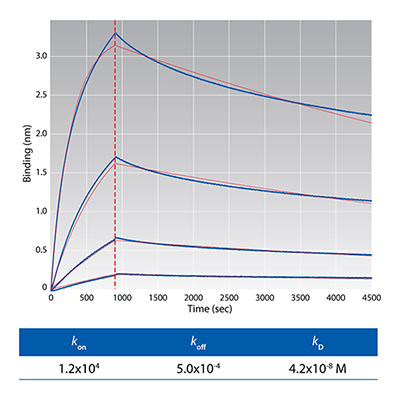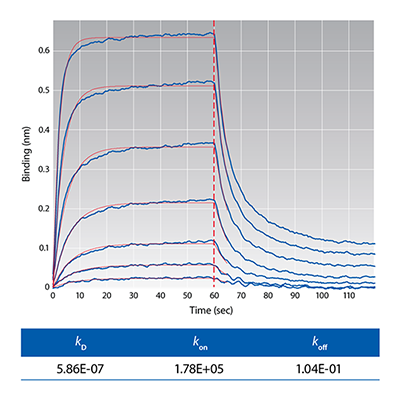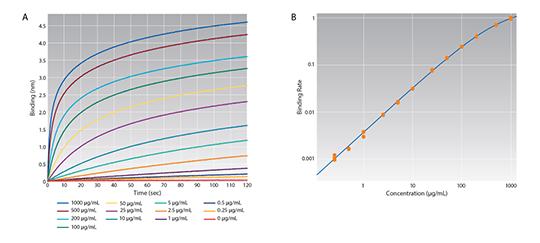For Label-Free Detection, Quantitation, and Kinetic Analysis of Human Fab and IgG
Anti-Human Fab-CH1 2nd Generation (FAB2G) biosensors come pre-immobilized with a high affinity ligand that is specific for the CH1 region of Human IgG. In conjunction with the Octet® and BLItz® Systems, FAB2G biosensors provide a rapid and label-free solution for analysis of Fab fragments or full-length human IgG for lead identification and optimization, epitope binning, cell line screening, process development, and QC applications. The anti-human CH1 ligand has no recognition towards free light chains or cross-reactivity with murine or bovine IgG. This high level of specificity enables direct analysis of IgG or Fab analytes directly from complex samples such as cell culture supernatants, lysates, or partially purified samples, offering a time-saving alternative to traditional analytical methods.
Learn more:
Key Features
- Perform kinetic screening, off-rate ranking, and epitope binning of Fabs in crude or partially purified samples
- Easy capture of human Fab or IgG for kinetic analysis of binding to target antigen or Fc receptors (Kon, Koff, KD)
- Rapid quantitation of all subclasses of human Fab, F(ab′)2 and IgG
- No recognition towards human kappa or lambda light chains
- Improved Fab capture affinity, baseline stability, and regeneration over original FAB biosensors

Figure 1: Kinetic analysis of the interaction between ligand HIgG Fab (50 kDa) and an analyte Fab fragment, Goat anti-HIgG (H+L) (50 kDa) on the Octet RED384 system. 1X Kinetics Buffer was used as the matrix throughout and the assay temperature was 30°C. Data were processed and curve fit using a 1:1 binding model.

Figure 2: Kinetic analysis of interaction of human IgG1 with FcRn. FAB2G biosensors were used to capture hIgG1 and associated with FcRn using several concentrations. The 1:1 model with global fitting and five seconds of the dissociation step (fit lines are in red) were used to determine affinity constant. The assay was run in phosphate buffer, pH 6.0.

Figure 3: Dose response curve of human Fab binding to FAB2G biosensors on the Octet RED384 system with assay parameters (1000 rpm, 2 min) for a standard dynamic range. A) Raw data traces B) Resulting standard curve using calculated binding rates.
For More Information
Visit our literature page to download technical notes, application notes, posters and customer presentations.